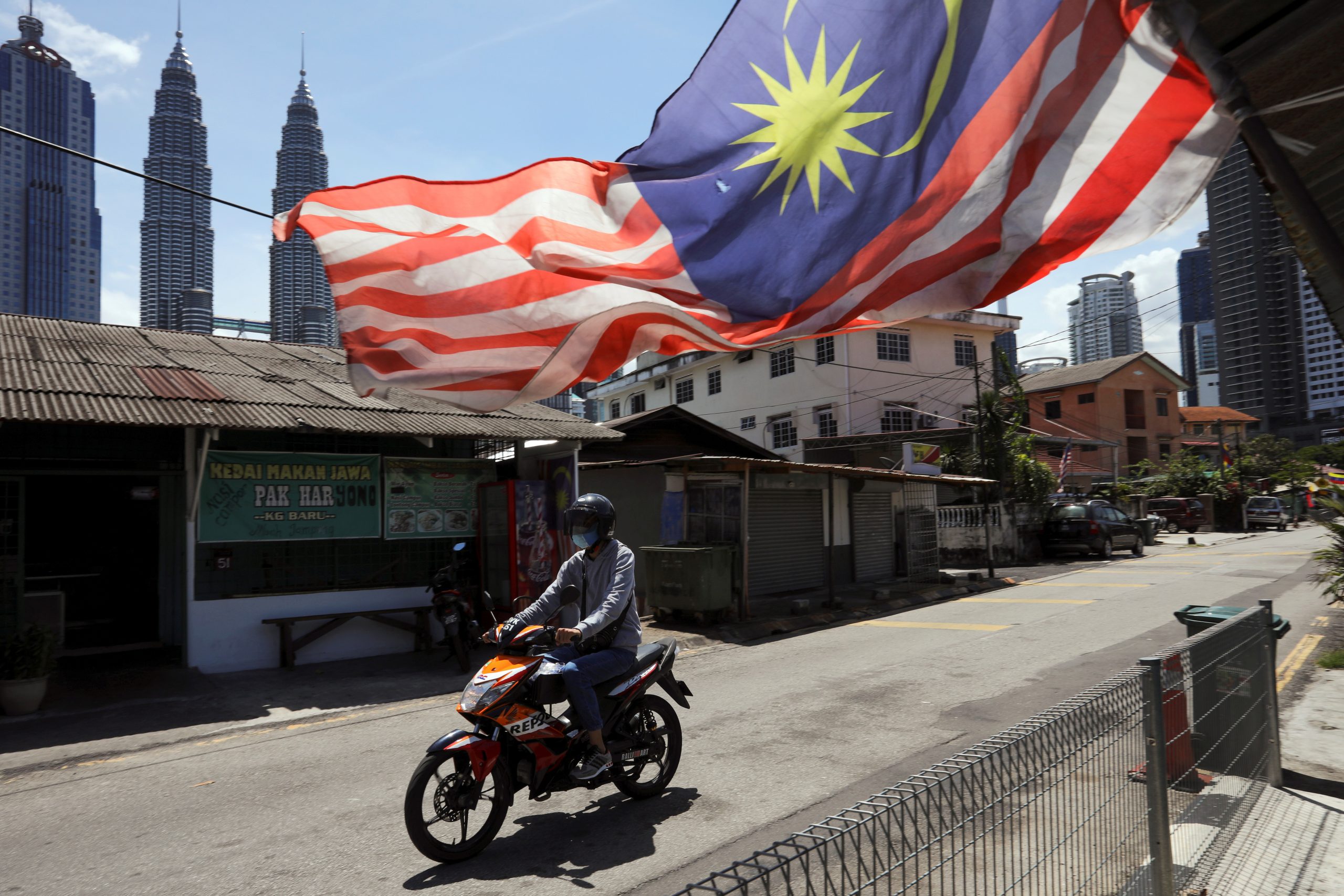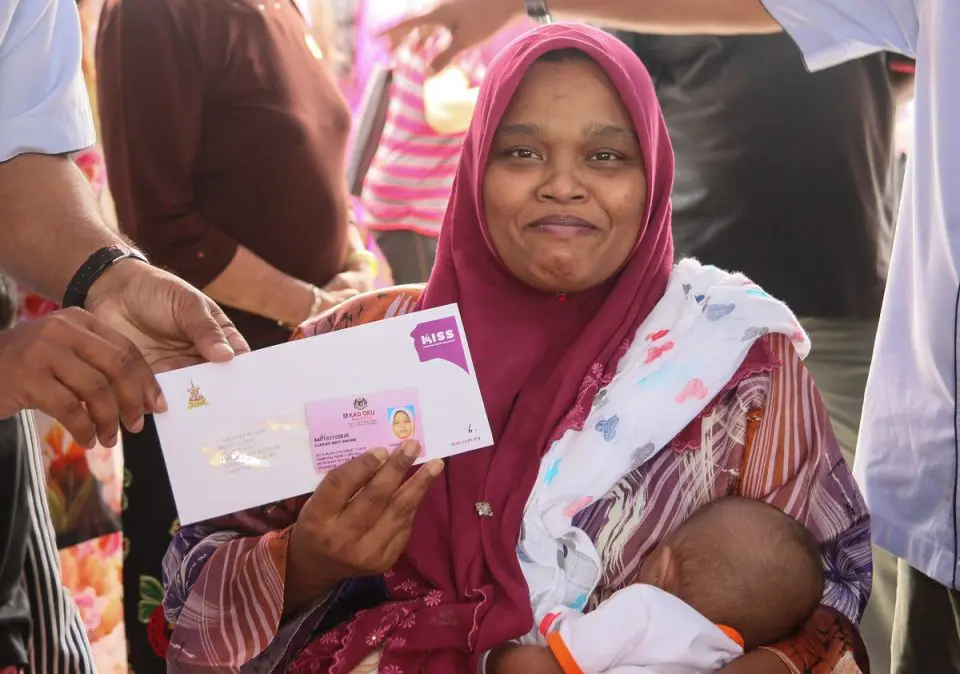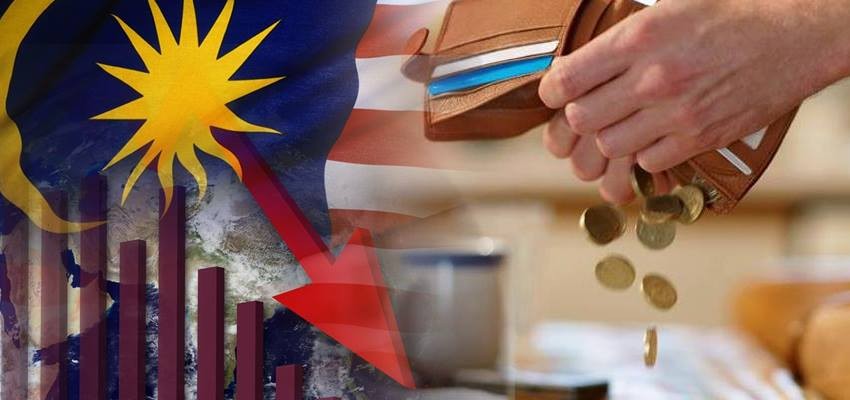KUALA LUMPUR, Dec 15 — After years of serving as the nation’s economic majority, the Malaysian middle class or M40 is now losing ground.
Based on the Household Income and Basic Amenities Survey Report 2020 conducted by the Department of Statistics Malaysia (DOSM), 20 per cent of households from the M40 group have fallen into the B40 group due to the Covid-19 pandemic fallout.
The M40 income earners or the “new poor” are said to be hanging on by a thread and others even falling off into poverty. The middle class earners, categorised as the bedrock of economic growth, are now battling financial woes and debts as the cost of living, especially in urban areas, continues to rise.
Lawmakers, economists and academics have earlier suggested that the government consider revamping both B40 and M40 categories, which are currently used as indicators for the low-income or bottom 40 per cent of society, and the middle-income group for the mid-40 per cent of society.
Tip Of The Iceberg
Hard hit by escalating living costs, many civil servants in the M40 group especially in the city have expressed hope that the government would lift them out of the doldrums.
“The numbers could be just the tip of the iceberg”, a 39-year old government officer and mother of four, who prefers to be called Nurul told Bernama as she shared her frustration over not being able to receive assistance due to her M40 status.
“I was devastated and stressed out when my application for assistance did not go through as I fall under the M40 category. For example, I recently applied for full assistance for my third child who is suffering from mild autism, but the household income for applicants stated in the form should be below RM5,000. Hence, I was automatically not eligible for assistance.
“I am in the low bracket of M40 and with four children aged two to 10 years old under my care. The requirements are based on income and do not include the number of dependents. In actual fact, there is a big difference for M40 who has one child compared to one who has four young, school-going children like me. It is not an exaggeration to say that after a week of receiving our salary and paying bills, etc, we end up in B40,” lamented Nurul.
Pandemic Pushes M40 To B40

The Malaysian household is categorised into three different income groups, B40, M40 and T20. B40 refers to the bottom 40 per cent of income earners, M40 the middle and T20 the top 20 per cent.
Malaysians near the lower end of the M40 category are the worst hit by the economic fallout caused by Covid-19, perhaps even worse than those in the B40, as they felt they are largely ignored, especially under the government’s cash aid programmes.
These are the people who earn just enough to make the cut to M40, but insufficient to make ends meet if they live in urban centres, where costs are high. Those who lost their jobs due to the pandemic had to incur family expenses as well as home and car loan instalments.
A fellow of the Centre for Economic & Social Studies (EMAS), Institute of Islamic Understanding Malaysia (IKIM), Dr Muhammad Hisyam Mohamad said due to the Covid-19 pandemic, about 20 per cent of M40 households have slipped into the B40 group.
“Prior to this, the government was more focused on the B40 group. However, after taking into account the economic landscape, especially the rising cost of living and salaries that do not keep pace with inflation, something had to be done to improve the M40’s welfare.
“In addition, Bank Negara Malaysia (BNM)’s move to raise the Overnight Policy Rate (OPR) several times, further weighed on this group especially those with loan repayments or bank loans,” he told Bernama recently.
Based on DOSM’s new household income classification in 2020, a household with a monthly income of below RM4,850 is categorised as B40 while M40 is for those with an income of between RM4,851 to RM10,970 and T20 with an income of more than RM10,971.
The M40 is divided into M1 (with a household income of between RM4,851-RM5,880), M2 (RM5,881-RM7,100), M3 (RM7,101-RM8,700) and M4 (8,701-RM10,970).
Categories Based On States
Muhammad Hisyam said by comparison between states, income classification for B40, M40 and T20 also varies.
“In developed states such as Selangor, Kuala Lumpur, Putrajaya, Johor and Penang, the income level used to classify each group is higher compared to the income level for the same group in Kelantan, Sabah, Perak and Kedah.
“For example, in Kelantan, those with an income of more than RM6,620 are categorised as T20. However, with similar income, they are classified as B40 if they are residing in Selangor, Putrajaya and Kuala Lumpur,” he added.
While agreeing that total household income of B40 and M40 in urban centres do not reflect today’s cost of living, he said the 2020 Household Income Estimates and Incidence of Poverty Report released by DOSM in August 2021 showed average and median monthly income each fell to negative 10.3 per cent and negative 11.3 per cent respectively from the previous figures in 2019.
The average household income in 2020 stood at RM7,089 compared to RM7,901 in 2019 while the median household income was RM5,209 in 2020 from RM5,873 in 2019.

However, on an individual basis, the Salaries & Wages Survey Report 2021 by DOSM in October 2022 showed that the average monthly individual salary and wages for 2021 increased 3.5 per cent to RM3,037 compared to RM2,933 in 2020.
The median monthly individual salary and wages in 2021 also rose 9.1 per cent to RM2,250 from RM2,062 in 2020.
“Statistically, the increase in average and median individual income may be seen as positive. However, in hindsight, the 3.5 per cent rise in average salary is only a RM104 increase while the 9.1 per cent rise in median salary refers to a yearly increase of RM188 only.
“If rising inflation, cost of living and compulsory deduction (such as taxes, zakat and contribution to the social security scheme) imposed on households are factored in, the real income growth recorded is lower and possibly many will fall into the poor category.
“This is based on the government’s Poverty Line Income (PLI) of RM2,208 in 2019, which is slightly less than the median individual income in 2021,” he added.
Targeted Subsidy, Tax Relief
According to Muhammad Hisyam, the relevant parties should review the income classification of the population to reflect the current household income.
This is because it not only involves M40 income earners who have fallen into the B40 group but also those in T20 who have slipped into M40 and in fact, some are already in B40.
“The top income bracket for B40 is B4 while for M40 it is classified as M1, with not much difference. For M40 (M1) earners with a large household who reside in urban areas, this classification has caused them to be marginalised while they also need assistance and attention from the government.
“Hence, the government should consider providing targeted subsidies and reduce the tax burden for M40 groups, especially those in M1 and M2. A tax relief may also be considered for this group.
“Incentives provided for the M40’s lower income bracket under the 2021 budget such as cash assistance, tax relief for certain IT products, medical services, child care, etc, can be further extended to the group,” he said, adding that the nation should break out of the middle income trap if it aims to achieve the high income status between 2024-2028 as forecast by the World Bank.
Increase High-Quality Investments
Meanwhile, Assoc Prof Dr Mohd Nahar Mohd Arshad, who is an economic lecturer and Research Fellow at the Centre for Islamic Economics, International Islamic University Malaysia (IIUM) said the government can increase the disposable income for M40 by reducing the tax rate payable by the group.

“Disposable income refers to the amount of money that an individual or household has to spend or save after income taxes have been deducted,” he said.
On the possibility of the lower M40 bracket falling into the urban poor category, he said such a situation is inevitable given the inflationary pressure and the various financial commitments for those who reside in urban centres.
To elevate the people’s economic status, he said Malaysia should focus on attracting high quality investments instead of promoting the nation as an investment destination offering cheap labour.
“We need to attract high technology investors – who can offer high salaries for our workers – by providing a conducive and clean environment for them to operate,” he said.
Asked on the living wage concept previously introduced by BNM to guide policymakers and employers, Mohd Nahar said its implementation is rather difficult and time consuming compared to the national minimum wage rate set by the government.
The national employees’ minimum wage, which took effect on May 1 this year, is set at RM1,500 and is mandatory; employers who fail to pay the minimum wage will be liable to penalty or fine.
“The minimum wage rate will definitely not be enough for the workers (low income group) who are faced with rising living costs. The minimum wage rate is limited to workers for their personal and family basic needs.
“The living wage on the other hand allows one to enjoy quality of life and goes beyond affording the necessities, but covers emergency savings as well as for future investments.
“However, calculation for the living wage is more complex as it involves many factors such as current income, types of expenses, location, household size and work life balance,” he added.
To transform itself into a fully advanced and high income economy, Malaysia has to break itself from the middle income trap, he said, noting that higher wages would induce greater productivity through more dedication, effort and commitment.
Mohd Nahar said there is no doubt the financial well-being of workers would have an impact on their mental health.
Besides the targeted subsidy for the needy, he said the people should also be exposed to other aspects such as financial literacy.
“Improving the rakyat’s well-being is not the sole responsibility of the government. All parties – employers, workers’ unions, non-governmental organisations and in fact, every member of the community – have a role to play,” he added.
— Bernama





